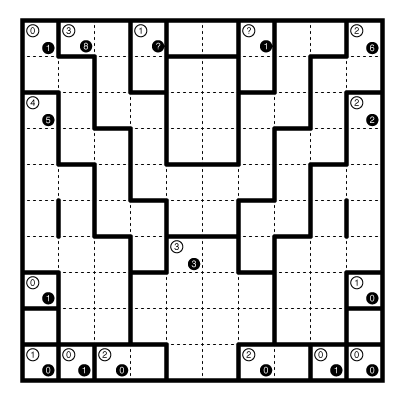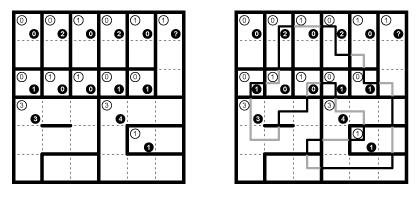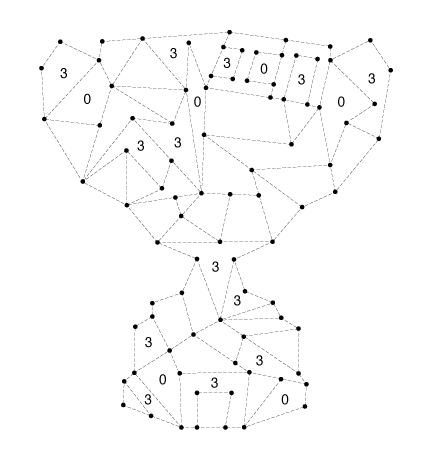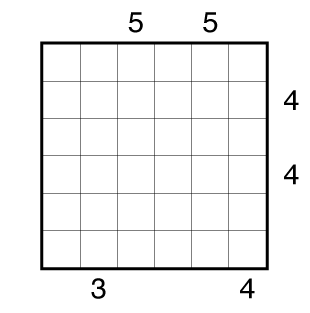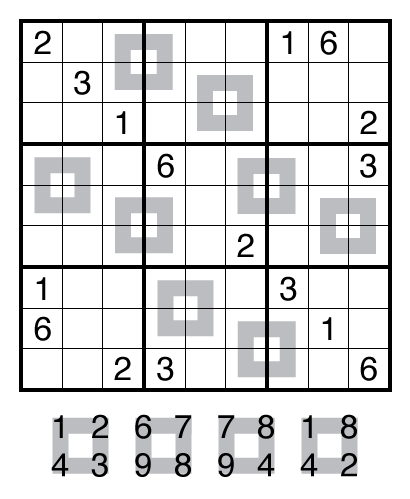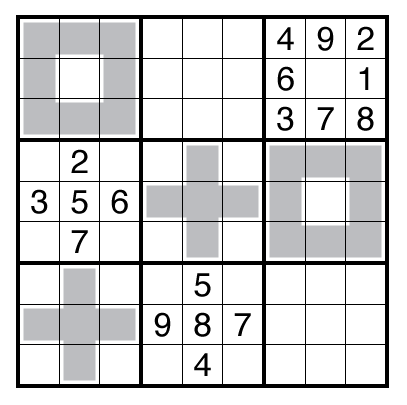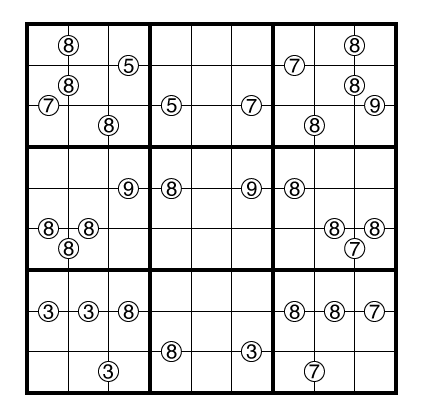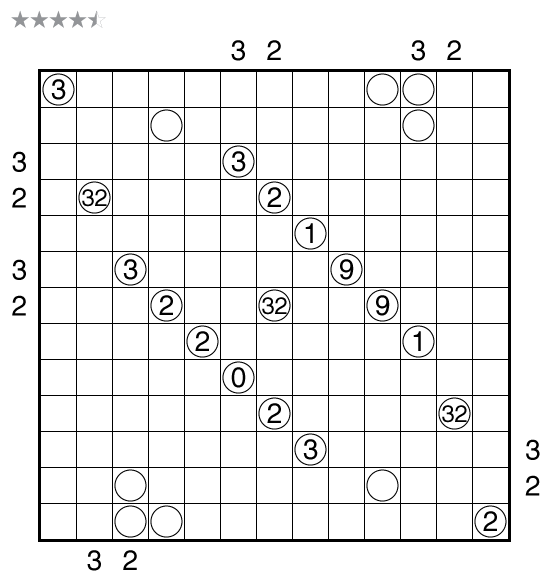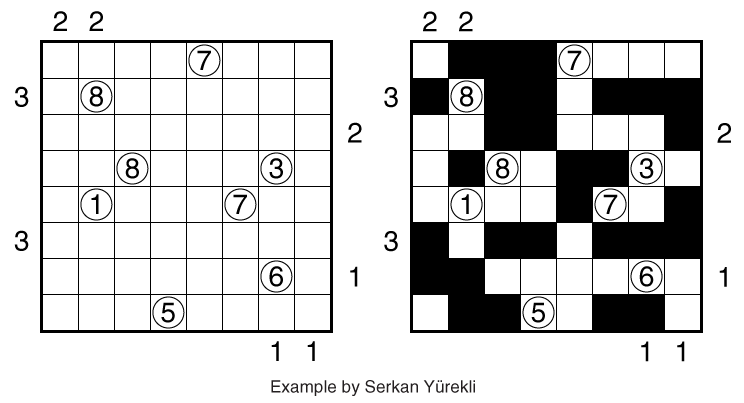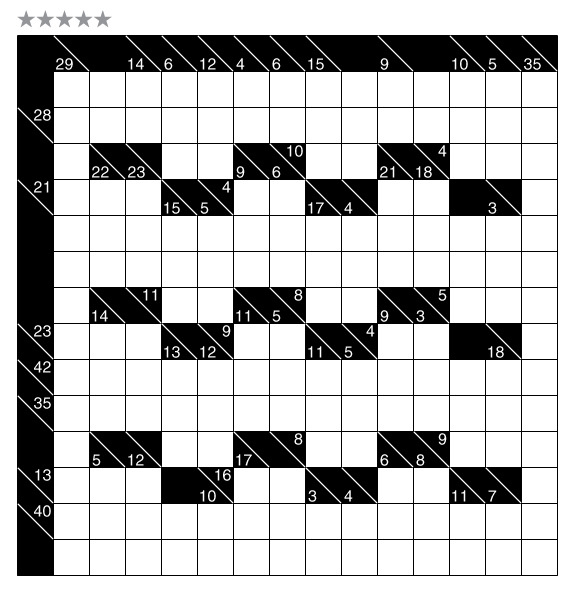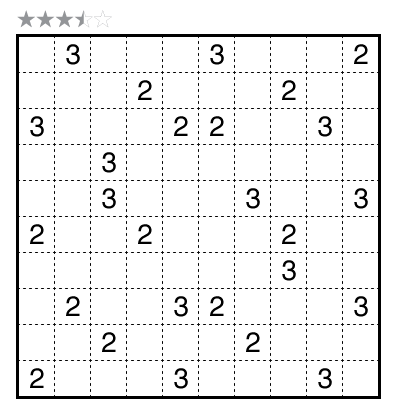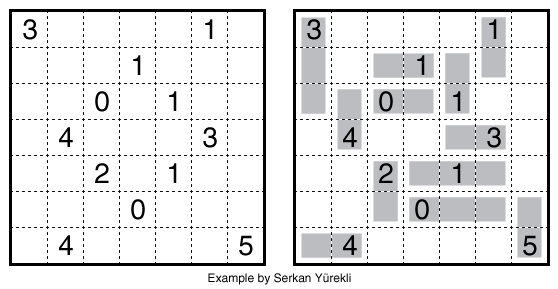Star Battle (Hidden Double) by Serkan Yürekli
Since we, as solvers, prefer to focus on the small regions of a Star Battle, Serkan Yürekli’s grid may allow us to continue thinking that way as we look for the hidden doubles.
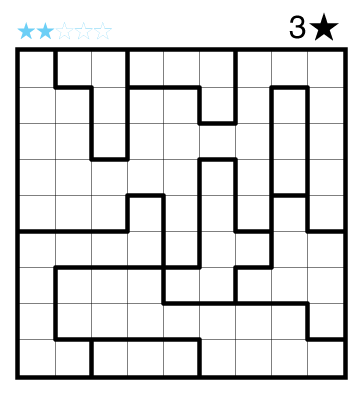
or solve online (using our beta test of Penpa-Edit tools with Double Minesweeper mines standing for stars. Left clicking a cell places a star, left clicking a cell again places a second star. Right clicking a cell marks it empty with a cross, right clicking between cells places a dot for notation.)
Author/Opus: This is the 422nd puzzle from our managing editor Serkan Yürekli.
Rules: Variation of Star Battle rules. There are three stars per row, column, and region. Cells with stars can contain either 1 or 2 stars, but stars can still not be placed in adjacent cells that share an edge or corner.
Difficulty: 2 stars
Time Standards (highlight to view): Grandmaster = 1:45, Master = 2:45, Expert = 5:30
Solution: PDF and solving animation.
Note: Follow this link for other classic Star Battles and this link for Star Battle variations. If you are new to this puzzle type, here are our easiest Star Battles to get started on. More Star Battle puzzles can be found in The Art of Puzzles, in the books Star Battle by JinHoo Ahn and Star Battle 2 by JinHoo Ahn and Murat Can Tonta, and in our beginner-friendly collection Intro to GMPuzzles by Serkan Yürekli.
Note 2: Comments on the blog are great! For a more interactive discussion, please also consider using our Season 2 Preview Week Discussion post on the GMPuzzles Discord. Not a member of the Discord? Click this link for basic access and check subscriber instructions for role-related access.

